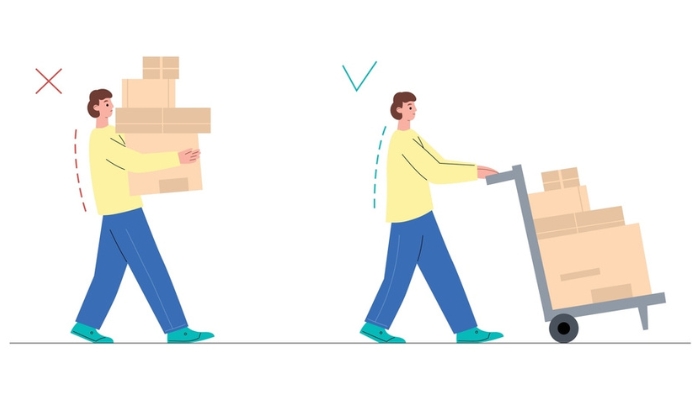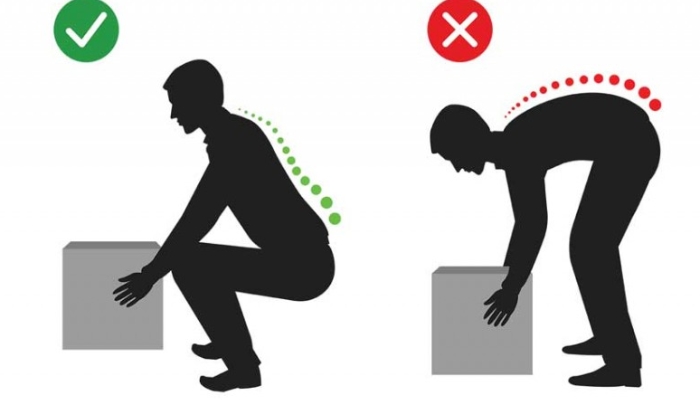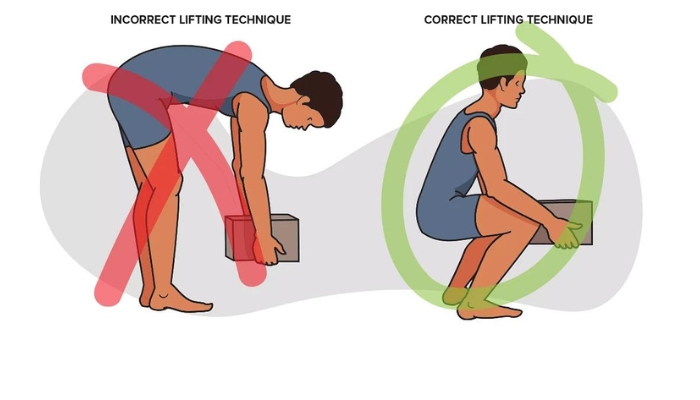
While moving homes and offices, you have to get a lot of things right. One such thing you have to get right is properly moving your heavy objects.
Sometimes you can use sliders to move these items, but other times you might have to lift them yourself. The best way to move heavy objects by yourself is by following the right kinetic lifting techniques.
Kinetic lifting is the way to lift heavy objects scientifically and efficiently so that you can move them with ease and without injuring yourself.
You should always assess the weight of the object before lifting it, and if needed, take help from another person. You must always have a solid base and keep your back straight while lifting heavy objects.
Let’s take a detailed look at what kinetic lifting is and its techniques.
Moving homes can be quite stressful, and a part of it can be attributed to your need to pack and move your items. While moving smaller items is quite easier, it is not the same when you move heavier objects, like furniture, etc.
This gets even tougher as moving them can cause serious injuries to your back, limbs, and other body parts. This is where kinetic lift comes in.
But what is kinetic lifting? Kinetic lifting is a way for you to lift and handle heavy weights without the use of any tools. But the main difference between kinetic lifting and usual lifting is kinetic lifting teaches you how to lift heavy objects without you getting hurt.
There are a few kinetic lifting techniques that will help you move your heavy objects without any issues or injuries. These are:

Before lifting any heavy objects via kinetic lifting methods, you first need to assess their weight and see if you can lift them yourself. You can try to lift a corner of the object to gauge its weight.
Don’t try to show off in front of others and lift something that is impossible for you to lift alone. If the weight of the object is too much, take help from another person.
Also, don’t try to judge the weight of an object simply by looking at it. Because some objects might look lighter than they actually are, such as boxes.

When you lift a heavy weight using kinetic lifting principles, you must have a solid base. Keep your feet a shoulder’s width apart, and the toes must face forward.
You should also plant one of your feet slightly in front of the other. This will result in the weight of the object getting evenly distributed throughout your body.

One of the most common mistakes people make while lifting heavy objects is bending their backs instead of their knees.
Leg muscles are more powerful than back muscles, so when you bend your back muscles to lift something heavy, it hurts your back more. Always keep your back straight, and bend your knees when you use the kinetic method of lifting.
This kinetic lift-off method will put more strain on the stronger leg muscles while keeping the weaker back muscles out of harm’s way.

One of the most common ways people get hurt while moving heavy furniture is when they drop the weight on their feet. This can happen if you don’t have a firm grip on the objects.
When you move objects that are on the heavier side by kinetic lifting techniques and manual handling, always have a firm grip on them. This will prevent them from harming you, and you will be always in control of the objects.
Another good technique for moving heavy objects is to keep them closer to your body. If you stretch your arms while moving them, your muscles will have an additional strain on them, which will not be beneficial for you.
On the other hand, keeping the objects closer to your body will not only save your muscles from being exhausted fast but will also allow you to have better control of the objects.
A big no-no while moving heavy furniture during moving homes is twisting your back or any other part of the body. This can seriously hurt you.
If you need to turn while carrying a heavy object, always turn with your feet and with the object. Also, move slowly and smoothly while doing so, as hurrying will do you more harm than good.
When you move heavier objects, the higher you lift them, the less control you will have over them. But you can’t also keep them near the ground and hope to move them without injuries.
The best way to move heavy objects is to always keep them at the waist level, which will provide you with a greater level of control over them.
When you are almost done moving the heavyweight, it will become very tempting to put the weight down quickly.
If you do so, you will hurt your back. Put the weight down slowly, and be in the same posture as when you had lifted the weight. Always have a solid base while putting the weight down, and you will be safe from any injuries.
Moving and loading heavy items onto the moving truck can be quite dangerous, but if you use the kinetic lifting techniques mentioned above, this will end up being quite easy for you.
Our removal service professionals ensure you don’t have to lift your heavy objects as they will load everything onto our moving trucks. So, call us today to book our moving services.
When you move homes, it is not always required to move heavy objects using kinetic lifting techniques. You can use sliders or dollies to move your heavy items.
While moving home, you must never lift your heavy items fast. You should always go slow when lifting these items, giving your muscles enough time to adjust to the weight.
Not everyone can lift the same amount of weight while moving home. The amount of weight someone can lift depends on the following factors.




